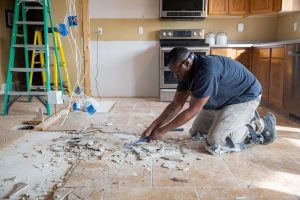Renovating your home isn’t just about updating the aesthetics. It’s a golden opportunity to improve safety, durability, and efficiency—all while future-proofing your investment. Whether you live in a city with extreme weather, heavy traffic, or simply want a long-lasting home, this guide offers smart home renovation tips to make your living space stronger, safer, and more resilient to wear and tear.
Before picking paint colors or flooring materials, evaluate the bones of your house. Any renovation project should begin with a check on your home’s foundational health.
Cracks in walls or ceilings
Shifting foundations
Sagging floors or roof issues
Professional structural repair not only addresses safety hazards but also prevents costly fixes down the line. It’s one of the smartest ways to add real value and durability to your renovation.
Renovations should focus on longevity, especially in areas exposed to weather or daily use. From flooring to countertops, select materials that can withstand time, water, and pressure.
Use anti-skid tiles in wet areas
Choose engineered wood or vinyl for high-traffic rooms
Opt for weatherproof siding or cladding for exteriors
Investing in robust options today minimizes future maintenance and damage, helping your renovation last longer.
Walls are often the first to show signs of aging—peeling paint, damp patches, and cracks. A high-quality wall coating acts as a shield, protecting both interiors and exteriors from moisture, pollution, and temperature fluctuations.

Resist UV rays and rain exposure
Reduce the chances of mold or mildew
Keep wall paint looking fresh for years
Choose elastomeric or waterproof coatings, especially in regions with high humidity or rainfall.
If your home heats up in summer and freezes in winter, poor insulation may be to blame. Adding thermal insulation during renovation improves comfort, reduces energy bills, and supports eco-friendly living.
Roof and attic spaces
Interior and exterior walls
Floors above unconditioned garages
There are many insulation materials—fiberglass, foam board, spray foam—depending on your budget and design goals. Efficient insulation ensures a quieter, cozier indoor environment year-round.
Water damage is one of the most expensive problems to fix post-renovation. The key is to integrate water damage prevention measures during the remodeling phase itself.
Install a sump pump in low-lying areas
Ensure proper drainage systems around the house
Use waterproof membranes in bathrooms and kitchens
Don’t forget to check plumbing lines and roof gutters. A dry home is a healthy home—and a structurally sound one, too.
Making your home resilient also means improving protection from external threats—be it weather, noise, or security concerns. Reinforcing your openings enhances both safety and durability.
Double-glazed windows for soundproofing and insulation
Steel-reinforced or composite doors for added strength
Window seals to reduce air and water leaks
Not only do these upgrades protect your home, but they also increase its market value significantly.
Renovation is your chance to build smarter, not just prettier. By focusing on structural , using protective wall coating, and incorporating thermal insulation and water damage prevention, you can ensure your home remains safe, efficient, and resilient for years to come. Remember, a durable home is a peaceful one—invest wisely now to enjoy comfort without constant repairs later.